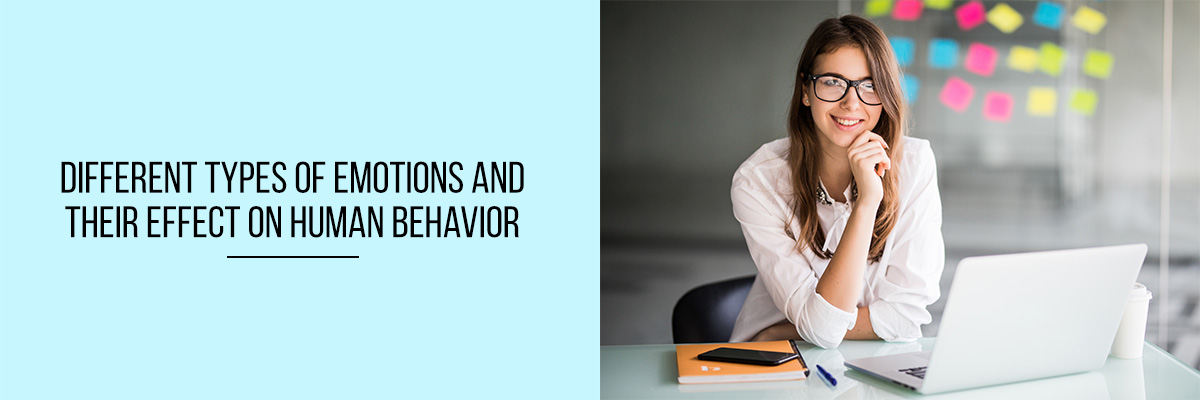Emotions are a fundamental and necessary part of life. There are many different types of emotions that have an influence on how we live and interact with others. Emotions can be categorized by what they are directed at, how long they last, how intense they are, how we express them (verbally and non-verbally), and whether they are a response to internal or external stimuli.



Psychologists estimate that there are from six to more than twenty different types of emotions, each of which serves different purposes. The six major categories are happiness, sadness, fear, surprise, disgust, and anger.
Let us take a closer look at the basic types of emotions and their impact on human behavior.
Happiness
Achieving lasting happiness is a difficult task. It requires a combination of self-awareness and knowledge, patience, a positive attitude, a strong network of relationships, and the ability to think positively and manage stressful situations. Achieving happiness may seem like a monumental task, but it does not have to be. The three primary factors that influence happiness are genetics, happiness-inducing activities, and interpersonal relationships. Genetics represents the genetic contributions to happiness. The second factor is called the hedonic treadmill. This is the tendency for humans to adapt to positive or negative stimulants over time. For a time, a person might be happy due to a sudden influx of attention from others. However, the individual will soon become accustomed to the new level of attention and thus return to a neutral baseline. The third factor is the social treadmill. This is the tendency for people to return to neutral even after positive or negative interactions with others.
Sadness
Sadness is a type of emotion that is often defined as a transitory emotional state characterized by sentiments of disappointment, hopelessness, disinterest, grief, and dampened mood. Sadness can have both positive and negative influences on both ourselves and others. It is often associated with or experienced in the context of, an event, and when the event has passed, sadness is usually followed by a resumption of normal mood and activity levels. However, sadness can also be a chronic, or persistent, emotion that lasts for days, weeks, or longer and is usually caused by a specific event, loss, or change.
Fear
Fear is often defined as an emotion that occurs in response to a perceived threat, real or imagined, that causes a change in the mental and physical state to deal with the threat. It is a basic survival mechanism occurring in response to a specific stimulus, such as pain or the threat of danger. Fear, in the form of anxiety, can be healthy when it helps an individual avoid threats to health and safety. But some people experience fear or anxiety that is so strong they can’t control it, and the fear or anxiety controls them.
Disgust
Disgust is the most easily recognized of the basic emotions and is distinct from revulsion (which is more intense), fear, and anger. Physically, disgust is associated with a frowning face, a curled upper lip, and a wrinkled nose, and is linked to the same facial muscles responsible for producing the facial expression of pain.
Anger
Anger is a common emotion that many people feel in the course of their everyday lives, from the petty frustration of losing your favorite hat to the all-consuming rage at the violent acts of terrorists. Most people feel anger at one time or another. This is normal. However, sometimes anger can be a problem. If you find your anger too hard to control, you may have an anger management problem.
Surprise
Surprise is one of the primary emotions we experience and it is typically brief, lasting a few seconds at most. Surprise is a powerful emotion that unleashes a strong chemical reaction in our bodies. This reaction is characterized by a sudden increase in heart and breathing rate, blood pressure, pupil dilation, and sometimes sweating. We also tend to drop what we are doing and take a moment to process the surprise, since we have to figure out what is going on.
Final Words
Emotions are an incredibly important part of what makes us human. Emotions and feelings are so much a part of our lives that we are seldom consciously aware of them. We experience emotions all the time, sometimes so small that we barely notice them, sometimes so big that we can barely cope with them. Often our emotions are a reaction to what is happening around us. Awareness of our emotions can help us to understand ourselves and others better and can help us to make more informed decisions.
To know more about the different types of emotions, attend the Compliance Prime webinar.


